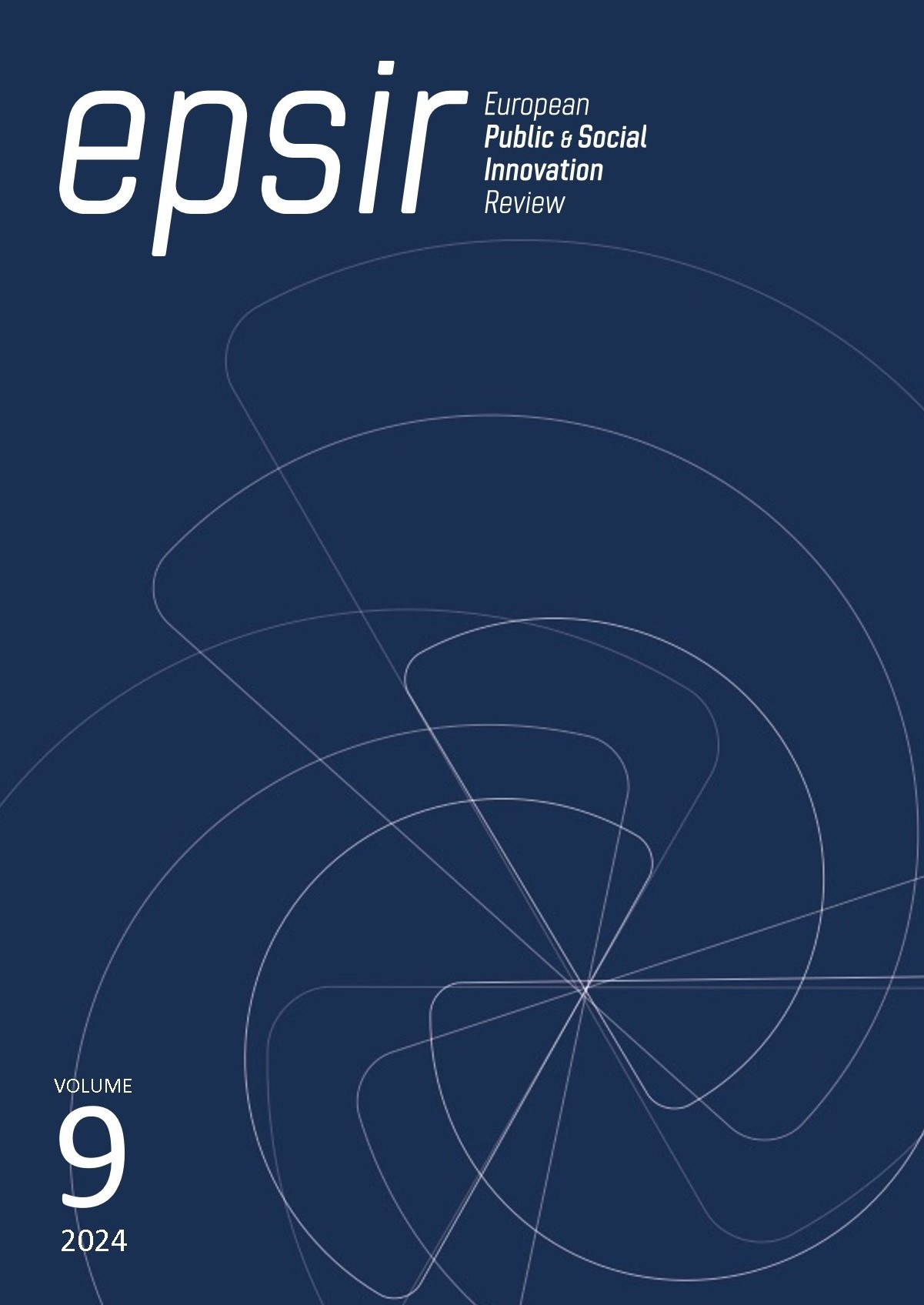Caimán y Filmaffinity: Un estudio comparativo entre la crítica cinematográfica profesional y la cinefilia digital
DOI:
https://doi.org/10.31637/epsir-2024-1123Palabras clave:
Crítica cinematográfica profesional, Cine Español, Caimán Cuadernos de Cine, Crítica cinematográfica amateur, Filmaffinity, Educación cinematográfica, ranking mejores películas españolas, análisis comparativoResumen
Introducción: Estudio comparativo entre la crítica cinematográfica profesional, Caimán. Cuadernos de Cine y amateur, Filmaffinity. Metodología: La investigación se ha llevado a cabo mediante un análisis cuantitativo con muestras de los rankings de las mejores películas de cine español. En Caimán se toma la encuesta que realizaron en 2016 y en Filmaffinity se ha tomado la lista publicada en la actualidad además de muestras tomadas del backup de Archive.org para los años 2023, 2022 y 2021. Resultados: Se advierte una fuerte coincidencia en ambos rankings. Al mismo tiempo, Filmaffinity presenta un claro sesgo temporal valorando mejor un mayor número de películas recientes y con menor representación de las primeras décadas del cine español. En Caimán hay un mayor equilibrio temporal. Discusión: Es significativo que ambas muestras coinciden en gran medida en las obras y directores más relevantes en el cine español. No obstante, hay algunos casos que dan lugar a debate, como, por ejemplo, las películas de Almodóvar y Amenábar. Conclusiones: Los datos afirman que las valoraciones en Filmaffinity son un buen reflejo de la crítica profesional. Por tanto, este estudio concluye con el desafío al que se enfrentan los críticos profesionales como guardianes exclusivos de los estándares de calidad cinematográfica.
Descargas
Citas
Andreas, D. y Verdú, M. (Eds.) (2021). La guía FilmAffinity: breve historia del cine. Nórdica Libros.
Beaudouin, V. y Pasquier, D. (2016). Les formes de l’exercice critique. Une analyse comparée de la critique amateur et professionnelle sur un site Internet de cinéphiles. RESET, 5. https://doi.org/10.4000/reset.684 DOI: https://doi.org/10.4000/reset.684
Beaudouin, V. y Pasquier, D. (2017). Forms of contribution and contributors’ profiles: An automated textual analysis of amateur on line film critics. New Media and Society, 19(11), 1810-1828. https://doi.org/10.1177/1461444816643504 DOI: https://doi.org/10.1177/1461444816643504
Blanco Hortas, M., Costa, J., Adalia, R., y Lahera, C. G. (2013). La crítica de cine: qué es y para qué se utiliza. https://tinyurl.com/55zy3w3m
Braga, C. y Ferré Pavia, C. (2011). El crítico de cine en internet: los retos profesionales hacia la interactividad con los lectores. Tripodos, Extra 2011, 461-470.
de Baecque, A. (2015). L’âge chimérique du spectateur. 24 Images, 172, 19-19. https://www.erudit.org/fr/revues/images/2015-n172-images01913/78104ac
del Campo Cañizares, E. (2012). Los “ensayos visuales” de Tag Gallagher como paradigma de nuevos modelos de análisis cinematográfico. Comunicación: Revista Internacional de Comunicación Audiovisual, Publicidad y Estudios Culturales, 1(10), 1334-1347. https://doi.org/10.12795/comunicacion.2012.v01.i10.100
Del Campo Cañizares, E. (2022). Estudio de las categorías propias del ensayo audiovisual cinematográfico en el video ensayo de análisis fílmico. En T. Piñero et al. (Eds.), Variantes de la comunicación de vanguardia (pp. 135-148). Fragua.
Frey, M. y Sayad, C. (Eds.). (2017). Film Criticism in the Digital Age. Rutgers University Press.
Keathley, C. (2011). La caméra-stylo. Notes on video criticism and cinephilia. En A. Clayton y A. Klevan (Eds.), The language and style of film criticism (pp. 176-191). Routledge.
Krywicki, B. (2015). La critique cinématographique: Analyse des contrats de lecture proposés dans la presse traditionnelle d’aujourd’hui [Tesis de grado]. Université de Liège. https://orbi.uliege.be/handle/2268/190872
Krywicki, B. (2019). Critique des critiques La crise de la légitimité des journalistes spécialisés en cinéma face aux dispositifs proposés sur le web. MethIS, 6, 1-17. https://doi.org/10.25518/2030-1456.496
López, J. M. (14 de agosto de 2011). Las posibilidades de la crítica digital. Transit. Cine y Otros Desvíos. http://cinentransit.com/critica-digital/
Maldonado, L. (2022). Una cierta tendencia de la crítica cinematográfica online: los críticos- cualquiera en las plataformas multimedia. Imagofagia. Revista de La Asociación Argentina de Estudios de Cine y Audiovisual, 26, 86-108.
Muñoz Fernández, H. (2014). La crítica digital en la era poscinematográfica. Caracteres. Estudios Culturales y Críticos de La Esfera Digital, 3(2), 142-156. https://shre.ink/DreP
Rodríguez Serrano, A. (2015). La Cinefilia 2.0 y el frameo: apuntes teóricos sobre el collage visual en la Nueva Crítica cinematográfica. AdComunica, 10, 99-113. https://doi.org/10.6035/2174-0992.2015.10.7 DOI: https://doi.org/10.6035/2174-0992.2015.10.7
Rosenbaum, J. (2010). Goodbye Cinema, Hello Cinephilia: Film Culture in Transition. The University of Chicago Press. DOI: https://doi.org/10.7208/chicago/9780226726663.001.0001
Schotter, F. (2021). État critique [Tesis de doctorado]. Liège Université. http://hdl.handle.net/2268.2/13037
Descargas
Publicado
Cómo citar
Número
Sección
Licencia
Derechos de autor 2024 Elpidio del Campo Cañizares, Rocío Cifuentes Albeza

Esta obra está bajo una licencia internacional Creative Commons Atribución-NoComercial-SinDerivadas 4.0.
Authors who publish with this journal agree to the following terms:- Authors retain copyright and grant the journal right of first publication with the work simultaneously licensed under Creative Commons Non Commercial, No Derivatives Attribution 4.0. International (CC BY-NC-ND 4.0.), that allows others to share the work with an acknowledgement of the work's authorship and initial publication in this journal.
- Authors are able to enter into separate, additional contractual arrangements for the non-exclusive distribution of the journal's published version of the work (e.g., post it to an institutional repository or publish it in a book), with an acknowledgement of its initial publication in this journal.
- Authors are permitted and encouraged to post their work online (e.g., in institutional repositories or on their website) prior to and during the submission process, as it can lead to productive exchanges, as well as earlier and greater citation of published work (See The Effect of Open Access).




